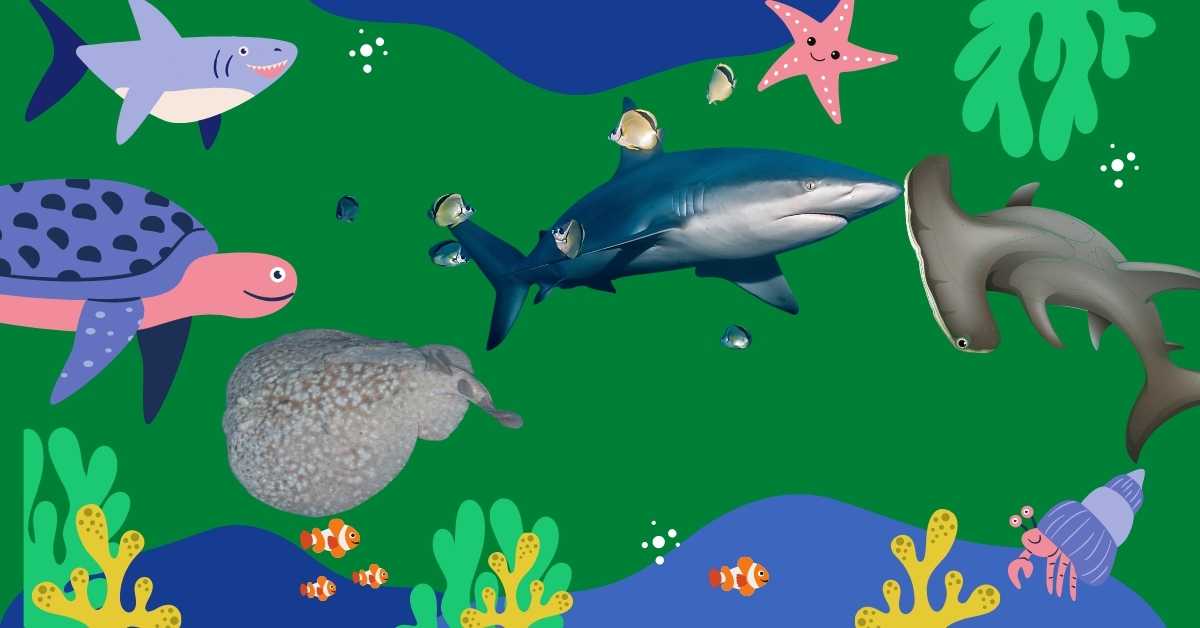The word ‘chondrichthyes’ came from Greek word ‘chondr’ meaning cartilage and ‘ichthys’ meaning fish. Chondrichthyes include all the cartilaginous fishes that contain cartilaginous skeletons. All the representatives of this group have jaws and paired fins with paired nares. The body is covered with placoid scales. Their body growth range from 10 cm (finless sleeper ray) to 10 meter (whale shark). Chondrichthyes is a diverse group including skates, rays, sharks and chimaeras.
General Characteristics
- This class of fish is known as Sharks, Skates and Rays.
- The skeletons of Chondrichthyes are made up of cartilage, but have become more or less stiff as a result of calcification.
- These are jawed fish.
- These fish have three semicircular ducts in the inner ear on each side of the head.
- Paired nostrils are present.
- Chondrichthyes bear paired fins.
- The gill arch is not firmly attached to the skull, but is attached to the connective tissue.
- Fertilization is internal. At the inner end of the male pelvic fin there is a pair of intromittent organs (mistakenly known as claspers).
- This organ transfers sperm to the fallopian tube of the female genital tract during mating.
The class Chondrichthyes is divided into two sub-classes, viz:
Sub-class-1: Elasmobranchii
Sub-class-2: Holocephali
Sub-class-1: Elasmobranchii
- The skin has tiny denticles or placoid scales instead of superficial scales, but the skin of electric rays and eagle rays is smooth.
- A single nostril exists on each side of the head.
- In most cases, 5 pairs (rarely 6 or 7 pairs) of individual gill opening exist and the gill arch is not covered by any bony operculum.
- The caudal or tail fins are asymmetrical, the upper part is longer than the lower part, and such a caudal fin is called heterocercal type caudal fin.
Sub-class-1: Elasmobranchii is divided into 8 orders. The identifying features and examples of these orders are mentioned below:
Order-1: Orectolobiformes (Carpet sharks)
- The nostrils are specialized, and the mouth contains naso-oral groove.
- Nariel barbell exists, gill openings lateral.
- The mouth is located in the ventral side.
- The 4th and 5th gill openings originate from the base of the pectoral fins and extend over the base of the fins.
- The labial fold (located at the lateral corner of the mouth) is located in front of the jaw.
- Two spiny dorsal fins exist, spiracles present.
Examples: Rhincodon typus Smith 1828 (Whale shark)
Stegostoma fasciatum (Hermann 1783) (Zebra shark)
Chiloscyllium punctatum Muller and Henle 1838 (Brownbanded bamboo shark)
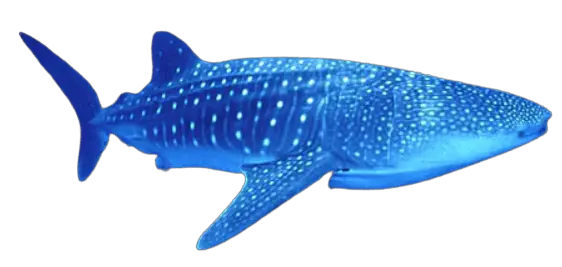
Order-2: Carcharhiniformes (Ground sharks)
- The nostrils are like ordinary sharks. No naso-oral groove, no perinasal fold or barbell.
- The labial fold is located at the back of the jaw.
- There are two non-spiny dorsal fins and anal fins.
- Spiracles are present in most cases.
- The caudal fins have a long dorsal segment.
- They prefer to live near the continental shelf and some species enter river mouths.
Examples: Carcharhinus limbatus (Muller and Henle 1839) (Black tip shark)
Carcharhinus melanopterus Quoy and Gaimard 1824(Black fin Reef shark)
Scoliodon laticaudus Muller and Henle 1838 (Spadenose shark, Dog shark)
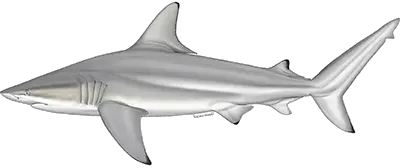
Order-3: Rhinobatiformes (Guiter fishes)
- The body is elongated with flat head and short ray-like fins with long strong caudal fins.
- The body looks like sharks and skates.
- There are two distinct dorsal fins and a caudal fin.
- The body is covered by tiny dermal denticles or placoid scales.
- The pectoral fins are of the medium type. It starts from the back of the top of the snout.
- They have large heterocercal caudal fins.
- They are ovo-viviparous and bottom dwelling.
- They eat mollusks and tiny crustaceans.
Example: Rhina ancylostoma Bloch and Schneider 1801 (Shovetnose Ray, Brown mouthed Guitar
fish)
Rhinobatos annandalei Norman 1926 (Annandale`s Shovenose Ray)
Rhynchobatus djiddensis (Forsskal 1775) (White spotted Guitar fish)
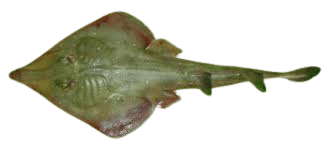
Order-4: Myliobatiformes (Rays)
- The body is ideally disc-shaped, usually more compressed up and down, wide and flattened.
- The eye and spiracle are present on the dorsal surface.
- The gill openings are located in the ventral side, 5 in number and perforated.
- A single small dorsal fin of medium size is located at the base of the tail.
- The caudal fins are absent.
- The trunk is wide, compressed and thick.
- A spine exists on the dorsal surface of the tail.
- In devil and eagle ray, the head is convex and separated from the disc.
- The tail is short in the butterfly ray.
- They are usually benthic.
Examples: Gymnura poecilura (Show 1804) (Long tail Butter fly Ray)
Dasyatis zugei (Muller and Henle 1841) (Pale edged Sting ray)
Himantura imbricata (Bloch and Schneuder 1801) (Scally Stingray)
Aetomylaeus nichofii (Bloch and Schneider 1801) (Banded Eagle Rays)
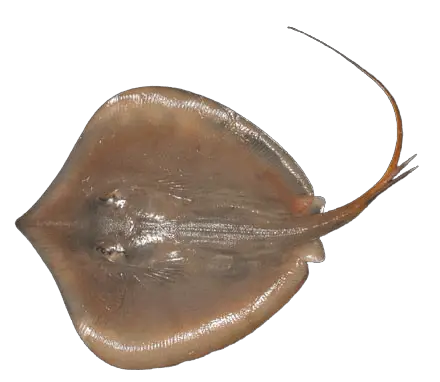
Order-5: Pristiophoriformes (Sawfishes)
- The head is compressed up and down.
- The snout is very long which has become a flat, narrow blade-shaped rostrum with a long tooth-like structure at the edges.
- Jaws and spiracle are present on the surface of the head.
- Gill openings are ventral.
- The dorsal fins are two, large and separate, the pectoral fins are small.
- The caudal fins are large and strong.
- The electrical organ is weak, it develops from the tail muscle.
Examples: Anoxypristis cuspidata (Latham 1794) (Knife tooth sawfish)
Pristis microdon Latham 1794 (Large tooth sawfish)
Pristis zijsron Bleeker 1851 (Green sawfish)
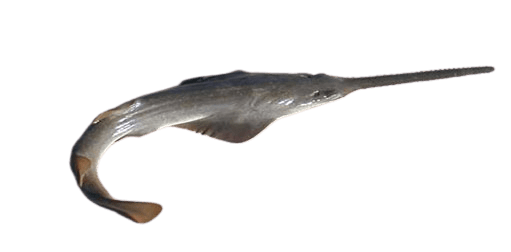
Order-6:Torpediniformes (Electric Rays)
- The body looks like a ray but has strong electrical organs. This organ originates from the branchial muscles in the head region.
- The skin is soft and loose, the eyes are small.
- The caudal fin is well developed, it does not have spines.
- Chest disc/disc large, round to shovel-shaped; Thick and soft.
- The body is scale less.
- Large kidney-shaped electrical organs exist at the base of the pectoral fin.
Examples: Narcine brunnea Annandale 1909 ( Brown Electric Ray)
Narcine timlei (Bloch and Schneider 1801) (Black spotted Electric Ray)
Narke dipterygia (Bloch and Schneider 1801) ( Spot tail Electric Ray)
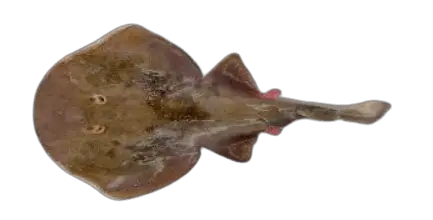
Order-7:Heterodontiformes (Horn sharks)
- They have different types of teeth.
- The mouth is sub-terminal.
- There are two dorsal fins with strong spines.
- It feeds on various mollusks, crustaceans and echinoderms.
Example: Heterodontus galeatus, lives in the Pacific Ocean.
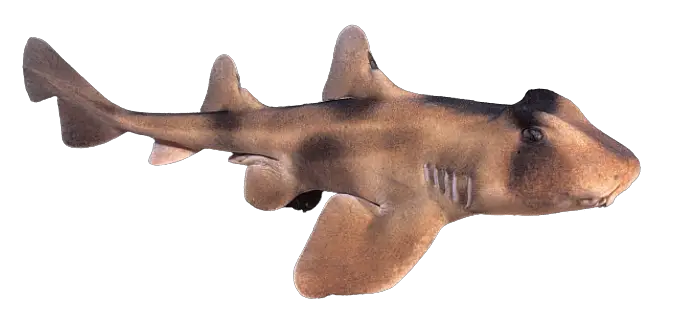
Order-8:Hexanchiformes (Cow sharks, Frill sharks)
- The fish of this order is called cow sharks.
- There is only one dorsal fin with no spines.
- The mouth is sub-terminal.
- The number of gill openings is more than 5.
- The eye does not have a nictitating membrane.
৬. Ovo-viviparous.
Examples: Hexanchus griseus (Cow shark),
Heptranchias perlo
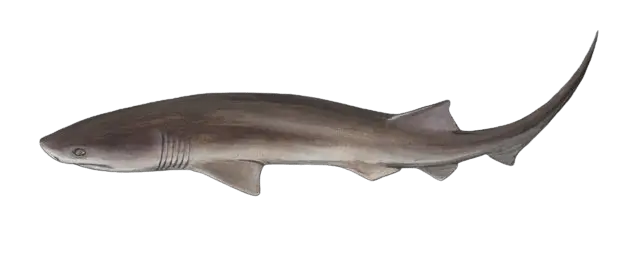
Sub-class-2: Holocephali (Chimaeras)
- 4 pairs of gills; a pair of gill openings.
- The gills are covered by a single operculum.
৩. Spiracle is absent. - Older fish do not have scales.
- Cloaca is absent.
- In males, the pelvic intromittent organ exists to contain the prepelvic tentacula, in which case, a clasping organ (tentaculum) exists in the anterior head.
6.. The tooth is plate-shaped and permanent. - Eyes are large in size.
- Oviparous.
Order: Chimaeriformes
- The gill opening is covered by operculum.
- There is no cloaca or spiracle.
- Strong spines exist in front of the 1st dorsal fin.
- The tail is slender and whip-shaped.
- The upper jaw is attached to the skull.
- Large teeth are present in each jaw.
- Oviparous.
Examples: Chimaera monostrosa (Rat fish)
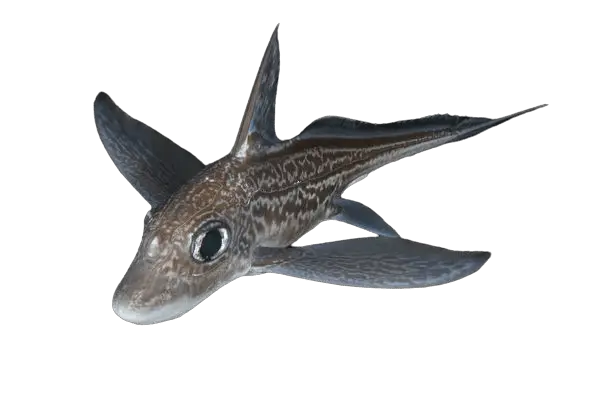
You might also read: Cephalaspidomorphi : Characteristics and Examples

